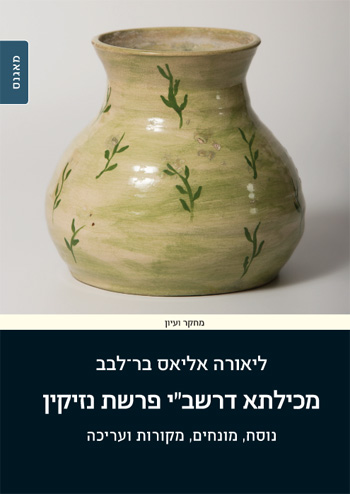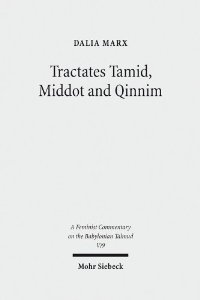Robert Brody, Mishnah and Tosefta Studies, (Jerusalem: The Hebrew University Magnes Press, 2014)
The “Jerusalem school” of rabbinics has traditionally avoided writing in any language other than Hebrew. In his introduction to the collected works of J. N. Epstein, Ezra Zion Melammed wrote that his teacher, J. N. Epstein “while living in the exile of Europe, wrote most of his studies in foreign languages, and from the day he ascended to Jerusalem, to teach at the Hebrew University, wrote all his studies in Hebrew […]. He also rewrote his opus magnum, Introduction to the Mishnaic Text, which was written in German and ready for the press, in his clear Hebrew […].” Even in the United States, students of this school published mainly in Hebrew: Saul Lieberman, Israel Francus, Abraham Goldberg, and Shamma Friedman wrote most of their enduring and important works in Hebrew (David Weiss-Halivni is somewhat of an exception to this rule, but the bulk of his scholarship, too, is written in Hebrew). One of Jacob Neusner’s standard complaints was the lack of scholarship in “a European language” – and the field has seen a sea change in this regard. Most scholars of rabbinics now publish extensively if not exclusively in “European languages,” especially English.
Except, of course, in Jerusalem. Here, Robert Brody is somewhat of an exception. He is the only Hebrew University professor of Talmud who published an important monograph in a language other than Hebrew. Mishnah and Tosefta Studies now joins his The Geonim of Babylonia and the Shaping of Medieval Jewish Culture as an important addition to Brody’s English oeuvre. It is part of a long-term project, which Brody describes in his introduction, of a commentary on Bavli Ketubot out of which grew a commentary on Mishnah and Tosefta Ketubot. In the course of that work, Brody understood that he wanted to “tackle in a more systematic way several topics about which I had thought, and sometimes lectured, over a period of years.” And he wanted to do it in English. The language shouldn’t fool you, thought: Brody might be writing in English, but the book is decidedly Jerusalemite: a crash-course in straight-up philology, clearheaded and free of jargon, served cold.
Brody takes us back to basics: examining all the evidence, sometimes offering simple solutions for complex problems, and sometimes admitting cheerfully that he has none. He moves abruptly from example to example – it seems that he is really interested in presenting examples, and that the niceties of introductions and conclusions are so burdensome that he sometimes does away with them – stopping to point out how they refute this or that scholarly consensus that has solidified over the years.
In the four parts of the book, Brody discusses four scholarly paradigms that have become dominant over the last decades in the field of Mishnah/Tosefta studies. He discusses each one with a series of test cases, through which the reader can grasp Brody’s guiding principle: the evidence is always prime, each case is different, and scholarly paradigms are only as useful as the answers they provide. Each of these paradigms is associated with a scholar or several scholars who introduced them to the scholarly community. In each case Brody discusses the work of those scholars, often pointing out that the paradigms which are named for them are far from their original intent. The four paradigms are:
1. There are two distinct versions of the Mishnah, one influenced by the Bavli and transmitted with the Bavli, the other influenced by the Yerushalmi and transmitted alone. An outgrowth of this paradigm is that the MSS of the Mishnah are considered more “Palestinian” and thus more “authentic” than the Mishnah in the Bavli. This paradigm was developed by Jacob Sussman and David Rosenthal, and is discussed little beyond Jerusalem and its satellites (e.g. Christine Hayes’s Between the Babylonian and Palestinian Talmuds, which problematizes this thesis as well). While this thesis seems simple enough – and of little importance to non-philologists – it has important implications for the history of the redaction and transmission of the text of the Mishnah, and also emphasizes the fuzziness between redaction and transmission in the first place. As Ishay Rosen-Zvi notes, studies of the orality of the Mishnah, for example, would do well to think of the Sussmanian assertion that the Mishnah was a completely oral text in the formative stages of its creation, as well as note the scholastic changes that the Mishnah underwent while it was being studied in the Talmudic academies which placed it at the center of their curriculum. Or did they? Brody tests Sussman-Rosenthal’s thesis of Talmuds influencing Mishnah text by examining several examples of discrepancies between the two versions of Mishnah which do not match this model. For example, there is no Babylonian Talmud on tractate Shekalim, but the distinction between the two strands of transmission -independent manuscripts versus Bavli manuscripts – still exists. Additionally, there is no Palestinian Talmud on the order Kodashim, but the distinction still stands. Brody discusses the ways in which we could account for these differences in the absence of a simple model like the one suggested by Sussman and Rosenthal.
2. The Tosefta predates the Mishnah. This paradigm is often attributed to a series of articles which culminated in Shamma Friedman’s Tosefta Atikta (Ramat Gan: Bar Ilan Universtiy Press, 2003). Brody agrees that “there is no doubt that Friedman is correct in claiming that the Tosefta sometimes preserves sources which are identical or very similar to those underlying specific passages of the Mishnah.” In Brody’s opinion, however, the operative word is sometimes. Since he has no general preference for one option over the other, he presents himself as an impartial observer, in each case trying to point out which option makes more sense (his treatment of Judith Hauptman’s Rereading the Mishnah, which espouses a similar point of view but makes more far-reaching claims, is somewhat less deferential).
3. The two MSS of the Tosefta present versions of the Tosefta which are independent of each other, and which have their origins in the distant past of the redaction and early oral transmission of the Tosefta. Here Brody really shines as a master philologist. In his opus magnum, a slim Hebrew book called The Textual History of the Sheiltot (New York and Jerusalem: AAJR, 1991) Brody offers his stemmatic analysis of the relationship between all known textual witnesses of the Geonic work Sheiltot, a compendium of sermons on the weekly Torah reading, based mainly on the Babylonian Talmud. While Sheiltot has nine full MSS and countless more textual witnesses, Tosefta has between three full witnesses and some additional partial ones. Brody transferred his philological acumen from one work to the other to point out some facts that have the potential to revolutionize the textual study of the Tosefta.
First, Brody asserts that all the witnesses of the Tosefta are descended from one single written exemplar. Even the major discrepancies between the manuscripts can be explained according to this model. Thus, unlike the Babylonian Talmud, the Tosefta is best analyzed as a written text, and the variant readings as errors or corrections in the transmission of a written text. Most intriguing is his discussion of what Yoav Rosenthal has termed “changes of place,” when one segment appears in different places in two witnesses not as a part of a list with an interchanging order of segments, but simply on its own. While Rosenthal in a recent article uses these changes to reconstruct a complex redactional history of the Tosefta, Brody is – as usual – skeptical. He prefers to ascribe these changes to insertion of marginal glosses in the wrong column, noting that the gap between the two places where these kinds of segments are located in the two MSS tends to be roughly the size of one column of text or its multiples – 140 words or so (pp. 50-51).
4. Rabbinic texts are best presented in diplomatic editions, according to the “best manuscript” available. Brody “passionately” disagrees, and thus the book ends with an “impassioned plea” to change the dominant practice of printing rabbinic texts as diplomatic editions of one manuscript, rather than making educated editorial statements as to the wording of the original text itself. Two recent editions come to mind – Kahana’s diplomatic edition of Sifre Numbers, as opposed to Milikowsky’s eclectic edition of Seder Olam, which is closer to Brody’s plea.
The plea itself is in fact somewhat less than “impassioned,” as is the rest of the book: Brody is direct and curt. This book has no funny anecdotes about renaissance scholars , no apologies for the relevance of scholarship, and definitely no cultural criticism. In a field that constantly says its texts are indeterminate and fluid while adhering for the most part to whatever can be found in the canonized translations and computerized databases, Brody refreshingly lacks any desire to self-reflect. Words stand in the center of this book, and perhaps out of respect for those same words, they are used sparingly.
The book is generally well-edited, except for the too-common passive constructs and several copyediting glitches – for example, the name Lieberman (as in Saul) is sometimes spelled Liebermann and sometimes not. This could have easily been corrected. I would have also appreciated Hebrew texts as well as the translations Brody provides, but they will probably be in the Hebrew book slated for publication soon. This book is an important contribution to the textual study of Mishnah and Tosefta, an important corrective to comfortable paradigms and rules-of-thumb that dominate rabbinics, and for the first time all of this is available in English. Ignore it at your peril, and assign it to your graduate students.







 As a devoted reader, I was flattered by Yitz and Shai’s invitation to review for The Talmud Blog the new book by
As a devoted reader, I was flattered by Yitz and Shai’s invitation to review for The Talmud Blog the new book by 

![friedman20tannaitic0011[1]](https://thetalmud.blog/wp-content/uploads/2013/10/friedman20tannaitic00111.jpg?w=212&h=300)
